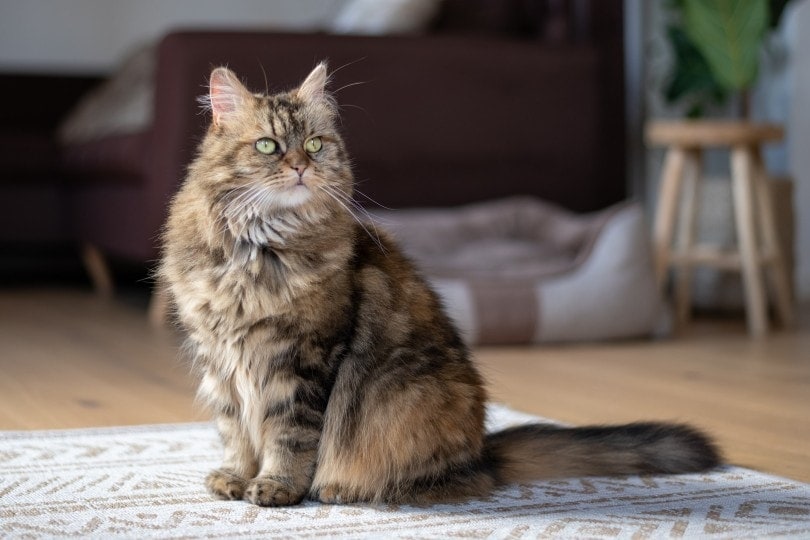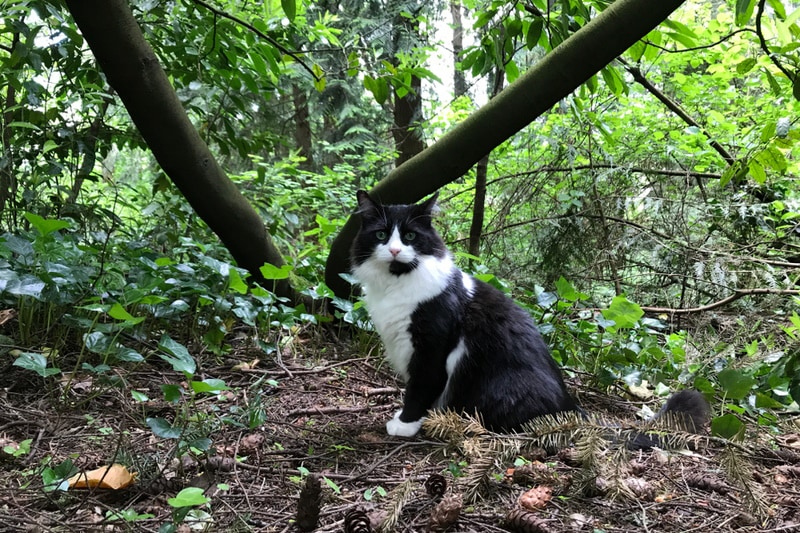Are All Calico Cats Female? Interesting Feline Facts
Updated on
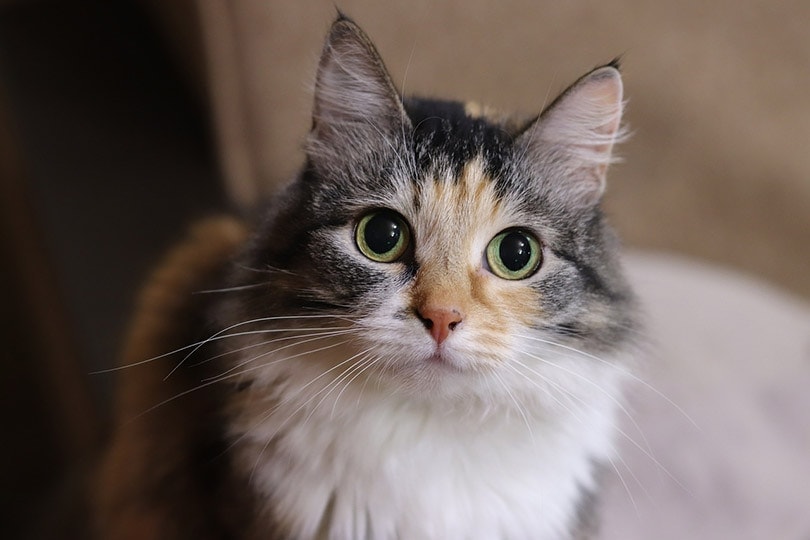
There is much to learn about calico cats, as they’re often quite misunderstood. Firstly, “calico” isn’t a cat breed but rather a color pattern of the coat of some cats. Secondly, although most cats with a calico coat pattern are female, there are a few male cats that have the same pattern, so contrary to popular belief, not all calico cats are female.
Let’s unpack what a calico cat is and why this eye-catching pattern is seen more commonly amongst female cats.
What Do Calico Cats Look Like?
Calico cats can come in all shapes and sizes because most breeds have the calico color pattern. Calico cats are those with a coat made up of three colors, with the main color being white. The two other patches of color are typically black and orange, but reddish, brown, cream, and blue-black are other variations that you may find.
The best thing about a calico cat is that it’ll never look exactly like another calico cat because the patterns are almost always unique. Where one cat could be mostly white with a few orange and black patches, another could have many more, covering different areas on their body.
Regardless of if one calico cat is a Maine Coon, and another is an American Shorthair, there will always be variation from one cat to another as the breed may also determine the cat’s personality.
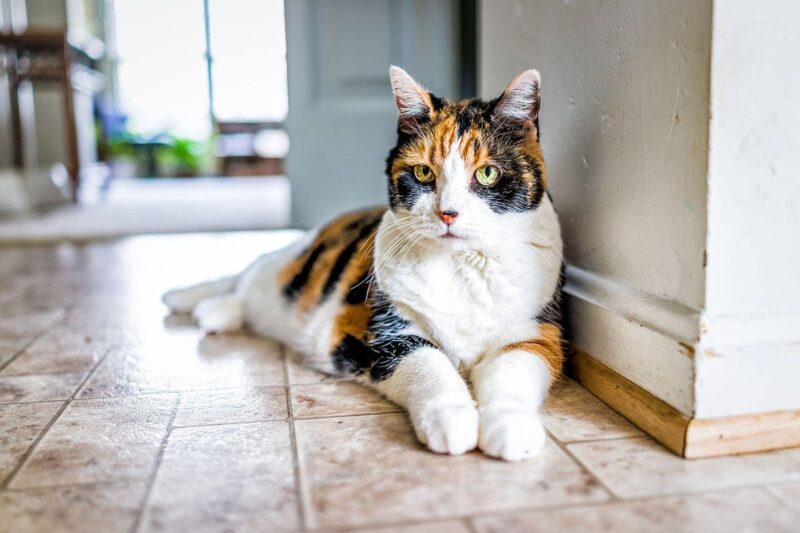
Are Calico Cats the Same as Torties?
If you thought calico cats were just another name for torties, you’re not alone, as many people get these color patterns confused due to the close similarity. Torties also boast black and orange patches or streaks, but instead of having a white base coat, they have very little of the color or none at all. Instead, their base coat is brownish. Torties can also have color variations, which are brown, cream, blue, and cinnamon.
Calico cats tend to have distinct patches of color over their white coats, while the colors along a Tortie’s coat appear to be interwoven. Similarly, both calico cats and torties are almost always female.
However, calico cats might be called something different depending on the country you’re in. In some countries, these cats could be referred to as “tricolor,” “bridle,” or “tortoiseshell-and-white.”
Why Are Calico Cats Mostly Female?
It’s true that almost all calico cats are female, and the reason for this is genetics, which determines a cat’s coat color through the X and Y sex chromosomes. Female cats have two X chromosomes, while male cats have one X chromosome and one Y chromosome. The X chromosome can determine whether a cat has an orange or black coat.
Due to a male having only one X chromosome, they’ll typically either be black or orange, while a female can have both colors because they have both X chromosomes. The presence of white is determined by another gene.
Therefore, most calico cats are female because they carry two X chromosomes, giving them a higher possibility of having the calico color pattern, while males only have one X chromosome, which results in either one color or the other.
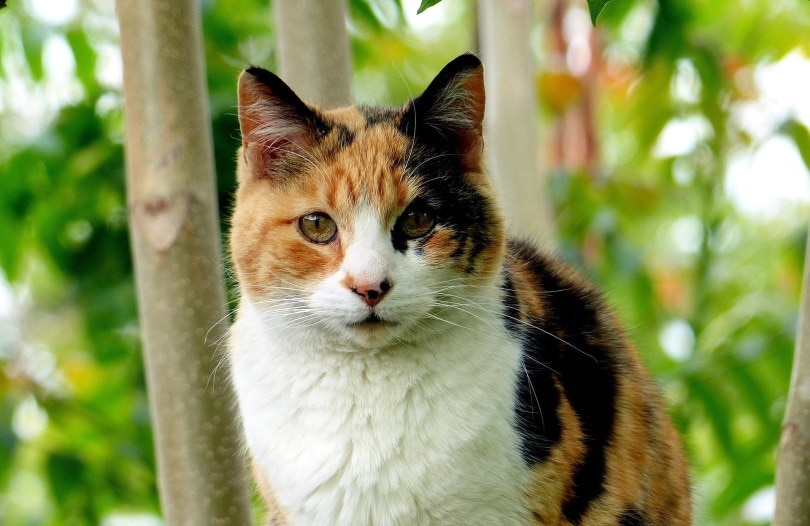
How Are There Male Calico Cats?
Although rare, it’s not impossible to have a male calico cat. It occurs due to a chromosomal abnormality, whereby the male is born with one extra X chromosome and has XXY chromosomes. This phenomenon is also known as Klinefelter syndrome. Male calico cats are so uncommon that they’re referred to as “unicorn cats.”
As unique and stunning as these male cats are, they are almost always unable to reproduce as a result of Klinefelter’s syndrome. Although a male calico cat suffers from a chromosomal abnormality, this isn’t the case for females who can reproduce and live long and healthy lives.
Some breeders claim to breed calico cats exclusively, but they’re often dishonest and untrustworthy for several reasons. Firstly, male calico cats are almost always sterile and, therefore, can’t be bred with a female calico cat to produce a litter of calico kittens. Secondly, breeding a female calico cat could result in a calico kitten, but it isn’t guaranteed because of the complicated way that genetics work. Many cat registries reject calico males, and therefore, most reputable breeders never breed calico males that happen to be fertile (which is a very rare occurrence in itself).
If you are on the hunt for a calico kitten for their fun personalities and stunning coats, expect to pay a high price because their uniqueness isn’t cheap. Breeders often price them higher than their other kittens because they’re not as easy to come by.

Popular Cat Breeds with Calico Coloring
Many cat breeds have the calico color pattern but not all of them. To help you with your search, we’ve listed some popular breeds with the color pattern below:
Conclusion
Although you may have seen a number of Calico cats throughout your life, the chances are they were all female. Although almost all calico cats are female, males with this color pattern do exist. Unfortunately, male calico cats only occur due to a chromosomal abnormality that renders them sterile and often causes other health and behavioral issues. These cats will require special care and can end up being quite costly.
Regardless, these stunning cats are popular and well sought after for their uniqueness and fun personalities.
Featured Image Credit to: Svetlbel, Pixabay


